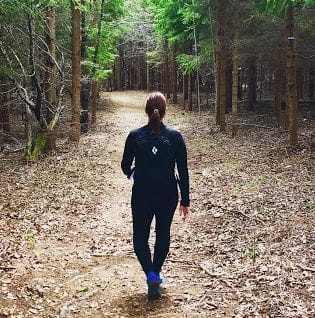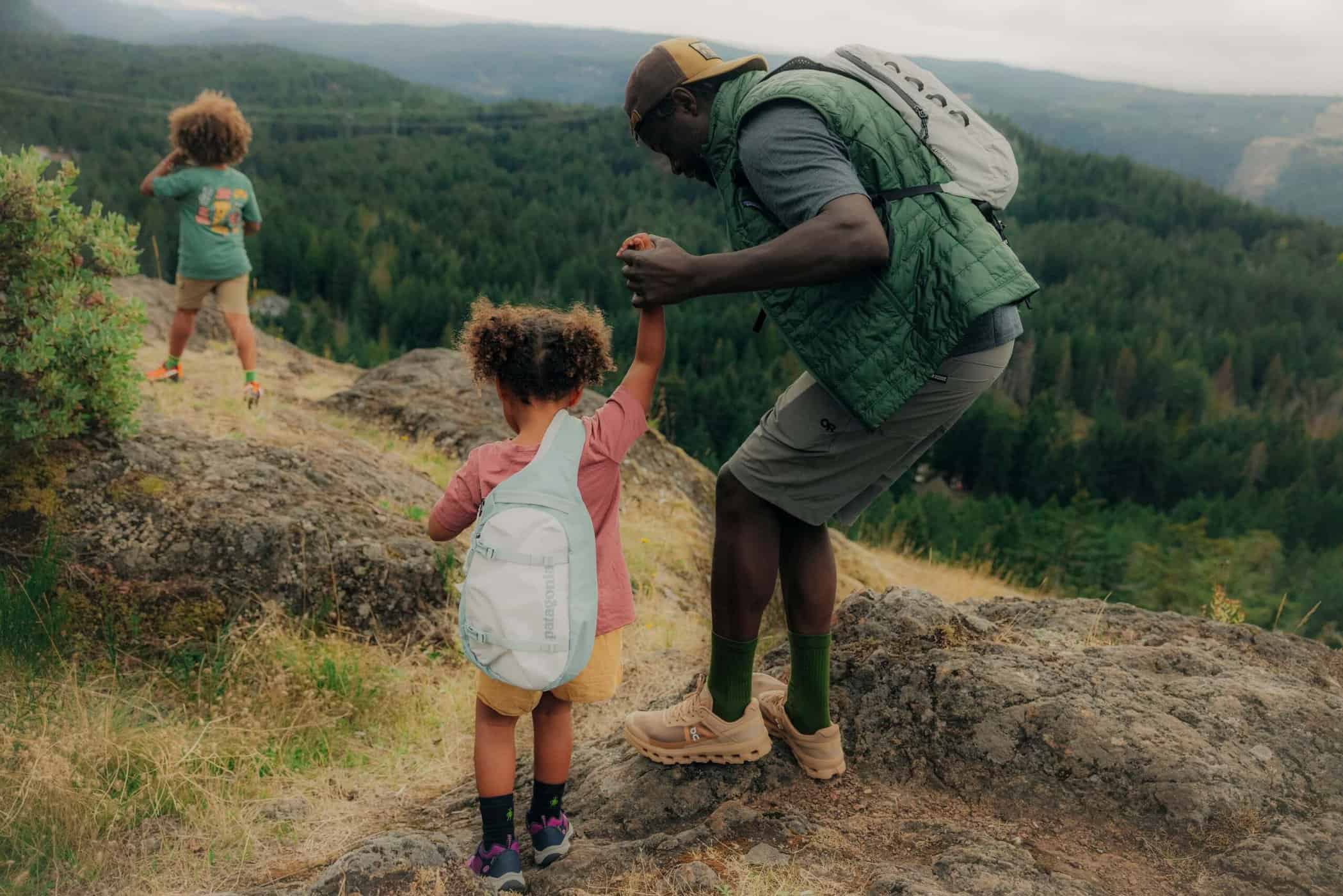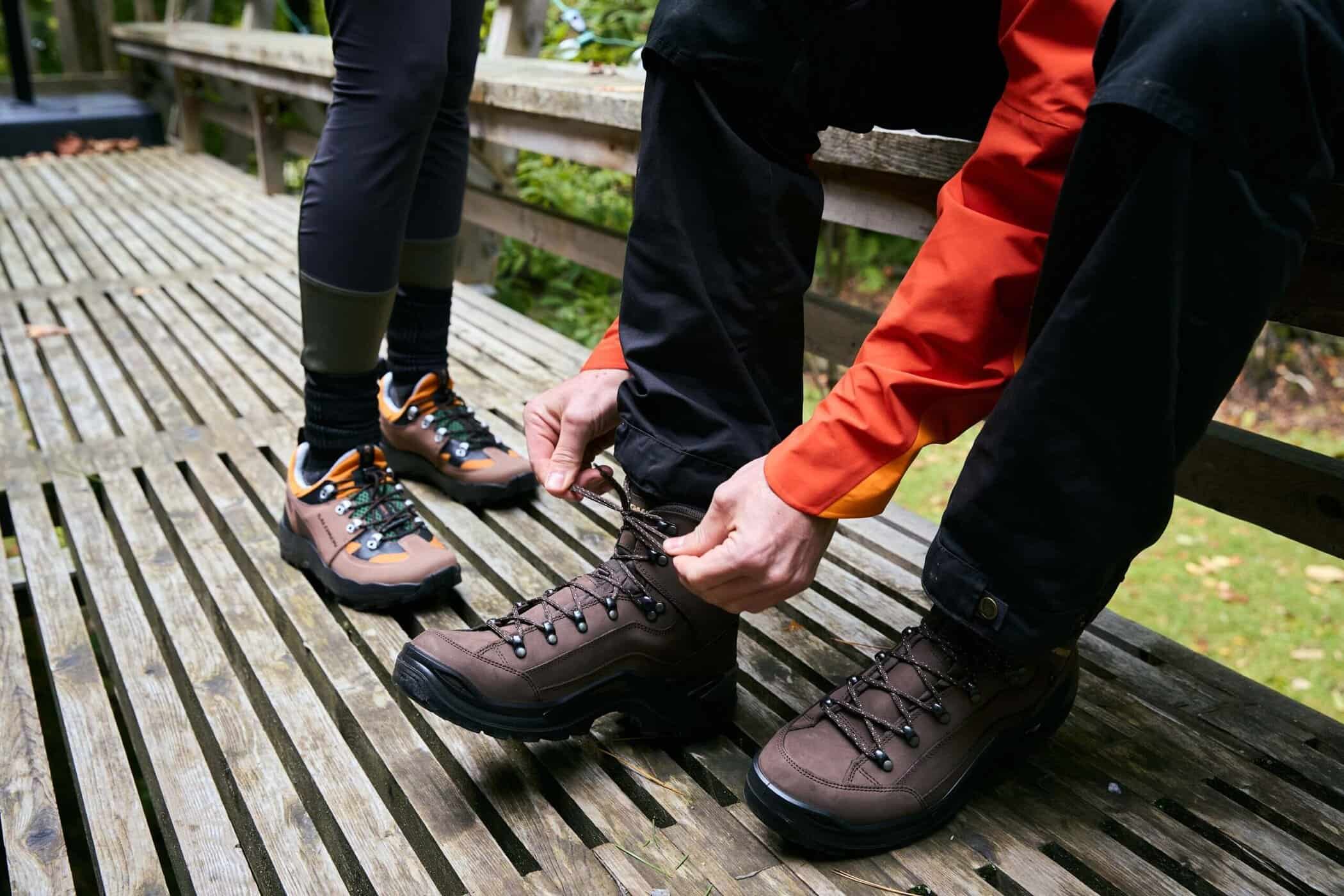This 101 guide will show you what to wear when hiking, as well as cover the different types of materials, accessories to consider, layers to wear (obviously you can’t dress the same for the rain, snow and heat) and much more so you can have the most successful outing possible.
Hiking Clothing 101
The first thing to do is to plan your hiking outfit according to the weather forecast. As any good hiker knows, the weather is fickle, so you have to be prepared for all eventualities. For example, on a day hike, carrying a thin windbreaker or intermediate jacket in your backpack, if necessary, can allow you to continue longer and not have to turn back.
The multi-layer system
A second quick tip that all gear junkies know is to layer. And the multi-layer system is fortunately very simple, and not necessarily more expensive. You start with a first base layer (merino wool models like those from Smartwool or icebreaker are great options). It serves to evacuate moisture and control perspiration, in addition to repelling odours. Merino wool works so well that you can even wear the same one on a multi-day hike without any problem. We know, we’ve done it.
Then comes the second intermediate layer, more or less necessary depending on the temperature. Obviously, if you hike in summer, a simple t-shirt coupled with a coat (if necessary) is entirely sufficient. But for more serious hikes, in winter or fall, in more hostile environments, the second layer is the one that keeps you warm. We like it light, made of down or synthetic fibres like nylon or polyester, and ideally without a hood.
Why without a hood? Because the middle layer, while it keeps you warm, is not windproof. You will need a third outer layer that is waterproof and windproof if you are hiking in the rain, snow or cold weather. So the mid-layer should fit easily under your outer layer, which will have its own hood.
What about the materials? Synthetic or natural?
It’s a long debate. Some natural materials like wool breathe very well and dry quickly. Others, like cotton, not so much. Synthetic materials, such as nylon or polyester, dry quite well and are comfortable for hiking. They are a good option for comfort in hot weather. Also consider brands that offer recycled fibre outdoor apparel, like Patagonia or The North Face.
Your budget
If you’re just starting out, you don’t need all the expensive gadgets and clothes. Go for the basics, and forget about unnecessary accessories. For example, if you’re going on a day hike, you don’t really need hiking poles or a headlamp.
Hiking Shirt
Long sleeve or short sleeve?
How you dress for hiking is very much up to your taste. For summer hikes in the woods (where you’ll be relatively well hidden from the sun), you may well opt for a short-sleeved shirt. It is important that it is light and breathable. If it has sun protection, that’s even better!
On the other hand, long-sleeved hiking shirts offer better protection from the sun and mosquito bites, so take note if you’re travelling somewhere they’re prevalent! When it comes to materials, look for shirts made of nylon or polyester, and even better if they are made of recycled fibres.
Pants and shorts
Do you really need specialized pants or shorts? Ideally, yes. Although we have seen hikers in jeans (yes, it happens), they are definitely not the most comfortable. Here, the answer is quite similar to the paragraph above. Pants offer better protection from the weather and insects, as well as good protection from poison ivy and other such plants. Shorts work well for summer hiking. Just make sure you have plenty of room to move – look for stretch (like elastane!).
For trips in the rain or snow, pants are of course the way to go. You can choose waterproof pants or rain pants (look for GORE-TEX), which can be worn over merino leggings to provide adequate protection.
HIKING JACKET
The purpose of a coat, depending on the conditions, is to protect from wind, rain and cold. For a rain jacket or waterproof coat, choose a lightweight model, not necessarily lined, with the following markings: GORE-TEX, DWR, waterproof or seam-sealed. They are often made of nylon or polyester and coated with DWR (durable water repellent) or GORE-TEX, or equivalent.
For your summer outings, you can also opt for a light jacket that will protect you from the sun and insects.
HIKING SOCKS
Hiking socks are an essential piece of equipment. Here again, we recommend the use of merino socks, which offer incomparable softness, regulate your body temperature, wick away sweat and moisture, and prevent blisters. Miraculous? Almost. Even if it’s less chic, opt for socks that go higher than the ankle, especially if you have boots.
HIKING FOOTWEAR
Hiking Shoes vs. hiking boots
Do I really need hiking boots? Or can I make do with shoes? Another debate, but the answer is pretty simple: you probably don’t really need hiking boots. Let’s look at the details.
A shoe gives you good protection, a lugged sole, and comfort for long distances and rough terrain. They are lightweight, flexible, can be water and mud resistant, and are often less expensive than boots.
Boots, on the other hand, are heavier. They are also much more durable (if you’re careful with them!), and offer better ankle support. However, experience will tell you which you prefer. Hikers who walk in boots have less contact with the ground and therefore have less of an overview of the terrain. Even with the best ankle support, there is a risk of injury. For most trails, shoes are sufficient.
Learn more about the differences and advantages of boots vs. hiking shoes.
Trail running shoes
Another option to consider is the trail running shoe, or trail running. This increasingly popular sport is simply running in the mountains, rather than on the road. For trail runners, this type of shoe is similar to a hiking shoe but is even lighter, often rides lower on the ankle, and has particularly aggressive cleats.
Features to consider
There are several aspects to consider when choosing a trail running shoe. The pattern of the cleats and the size of the cleats, for example. The more aggressive the lugs, the more grip you’ll have on rough terrain. Vibram soles (used by many models) or Salomon’s Contagrip are good options, but there are many others.
Remember to choose waterproof boots or shoes, with GORE-TEX or other protection, so you don’t have to worry about mud on the trails. Also, the size of the shoe may not be your usual size. Consider choosing a model that will allow you to put on a good merino wool sock inside.
Summer hiking essentials:
There are several essentials to pack for an adventure when the weather is warmer. Always bring SPF sunscreen for your face and exposed body parts, even if you are hiking in the woods. Also consider summer hiking clothes with a sun protection factor, and of course sunglasses. A hat or cap is also a must in your wardrobe. Finally, even on a summer adventure, you can be surprised by changing weather conditions. Remember to pack a mid-layer or a small, lightweight waterproof jacket.
Winter hiking essentials
In winter, your clothing strategy will obviously be different. You’ll definitely need a toque (ideally made of merino), warm windproof gloves, and good wool socks. You’ll also want to make sure that your socks aren’t too thick for your boots: you don’t want your toes to be crushed, because you’ll risk blisters and frostbite!
Think of cold weather hiking clothes such as base layers, mid-layers, and a wind and waterproof jacket to keep you dry, and bring crampons and gaiters if you’re going to explore rougher or snowier terrain.
Other factors to consider when choosing hiking gear:
Buying a hiking shoe will ultimately depend on your personal preferences, the length of the hike you plan to take (you’ll need a very durable shoe for very long adventures), and the type of terrain. A trail running shoe, for example, won’t be very useful for difficult hikes where you have to climb a lot. It’s better to use a boot.
Also, consider the ethical and responsible aspects of the models you like. You’ll be enjoying nature; it’s worth choosing a shoe made of recycled or other materials.
Hiking clothes FAQ
Q: What should I avoid wearing when hiking?
A: Cotton. It doesn't breathe at all, and it won't keep you dry. In fact, avoid wearing anything that doesn't move very well.
Q: Can I wear sneakers for hiking?
A: If you're walking on flat, not-at-all challenging terrain, yes, if you want to... But it's not optimal. You won't have adequate support for long distances, and you risk injury as well as premature wear on your street shoes.
Q: Are leggings suitable for hiking?
A: Yes, they are. For a summer outing, a good pair of synthetic or merino leggings offer comfort, freedom of movement and softness against the skin. In winter, you can slip a pair on under your hiking pants for extra warmth.
Conclusion
We hope this article has been useful to you! The way you choose your clothes may require a little effort, but it will definitely enhance your experience. One last point: remember to always carry a backpack for your essentials! Snacks, jacket, spare socks, and whatever else you need – you’ll see how handy it is.
Have a good hike!
















